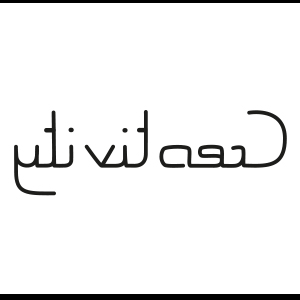As a designer I approach creativity in a discerning way and differentiate between creative processes and results. In my younger years it was mainly the results that I aimed to make as creative as possible. These days I’m particularly fascinated by the process itself and it has long become clear to me that creativity is not just confined to art and design.
I view creativity much more broadly. Creativity describes the ability to create something new. And we find the results of these creative undertakings everywhere: in culture, science, politics, the economy, social service organisations, medicine and biology. Everywhere there are people in action who strive in a solution-oriented way to develop something new, both on a small and large scale. In difficult times particularly, creative solutions are in demand. Change Management is the catch-cry and a rethink of conventional social processes is called for. Many techniques and workshops are on offer to stimulate and train creativity. In actual fact anyone can be creative and is so on an ongoing basis: some are just more practised than others. And there is no secret recipe, just natural skills that can lead to creative solutions.
But how do we feel, think or act creatively?
Every one of us has skills at their disposal that are helpful and valuable in creative activity, and I’d like to highlight some of them here:
New situations – coincidences
Contact with strangers or new situations allows us to see things from a different perspective, which can generate new ideas in our minds.
To expose ourselves to new situations, we need a level of interest, curiosity, courage and trust. Our interest can be aroused, but in the end we need to be inquisitive and brave enough to take the first step. The more often we seek out new situations, the more diverse our repertoire of responses becomes, despite mistakes or misjudgements. And of course we can’t plan every step. Sometimes coincidences occur at the right time. In these situations it helps to be flexible in our reactions, in order to find out how we feel in the new situation. Often the first steps in a creative undertaking were not planned as such. They came about by chance or as a diversion from the path intended. Differentiated perception Through our senses we are constantly perceiving the world around us. Often this happens so rapidly and simultaneously that individual perceptions get “lost”. Usually we link a feeling to our perceptions; in simplified terms, we register “like” or “dislike”. As soon as we become conscious of a feeling, an action follows.
If we are able to consider each perception in a discerning manner and evaluate the corresponding feeling, we’re able to critically regard our actions and if necessary change them. Deceleration greatly assists here… Looking inwards and outwards All living creatures, groups, societies, companies and even products are connected to each other and to the outside world. Becoming aware of these connections is an aid to understanding another person or situation and empathising with them. We need to “listen in” to our inner selves and listen to others with curiosity … Playful concentration Here I mean an inner attitude that focuses on a subject, but doesn’t “cling” to it. We can simulate possible scenarios on a subject and see what comes out, through practical trials as a direct approach, rather than theoretical deliberations. It’s a great help not to have any expectations regarding the results, to try to remain completely open and curious about the unknown. Of course results can be discussed afterwards. Positive motivation For all of this one needs trust and a fundamentally positive attitude. In an atmosphere of fear creative processes cannot unfold so easily, despite the saying “Necessity is the mother of invention”. The motivation to find a solution may be greater in emergency situations. However some emergencies are also avoidable through prior creative action.
The environment or situation should be real, not virtual. Even though many situations can be virtually simulated, it is not the same as the sum total of human perception in a real environment. I have experienced many creative moments with groups of people from diverse life circumstances and professions. In an open and impartial way we were able to develop projects or appraise visions. Because everyone contributes something individual to the process, approaches can be very complex. When a larger target group benefits from creative solutions, creativity is then valuable and noticeable in society. But even in quiet solitude one can engage in creative processes. Perhaps that is actually the best preparation. How one drives and implements a process depends on which tools are available, how much patience and perseverance are required or which partners can be enlisted. Starting anew again and again …


